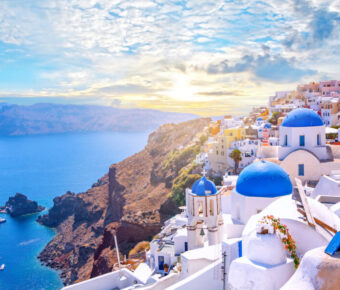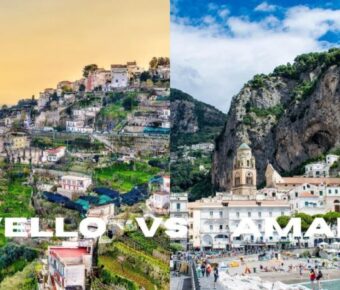
Split vs Budapest: Which Mediterranean Gem Offers Better Value for Culture-Seeking Travelers in 2025
Split and Budapest offer two completely different European experiences for travelers. The Croatian coastal gem of Split charms visitors with ancient Roman architecture and Mediterranean beaches, while Hungary’s grand capital Budapest captivates with its imperial buildings and thermal baths. Budapest is about 23% cheaper for tourists than Split, making it an excellent choice for budget-conscious travelers.
The Adriatic seaside location of Split creates a laid-back atmosphere perfect for summer vacations, with its marble streets and outdoor cafes. Budapest spreads across the Danube River, combining the hilly Buda side’s historic castle district with Pest’s vibrant urban scene. Each city shines in different seasons – Split dazzles in summer with more sunshine and beach activities, while Budapest’s architecture and indoor attractions make it an amazing year-round destination.
Contents
- Geographical Layout and Iconic Landmarks
- Budapest: Buda and Pest Division
- Split: Old Town and Diocletian’s Palace
- Cultural Insights and Experiences
- Cultural Festivals in Budapest
- Split’s Game of Thrones Heritage
- Economic Factors: Living and Travel Costs
- Cost of Living in Budapest
- Vacation Expenses in Split
- Culinary Journeys
- Hungarian Gastronomy
- Croatian Cuisine in Split
- Nightlife and Entertainment
- Budapest’s Vibrant Night Scene
- Split’s Party Hotspots
- Outdoor Activities and Nature Exploration
- Hiking around Budapest
- Beach Leisure in Split
- Accommodation Options and Recommendations
- Staying in Budapest: From Budget to Luxury
- Split’s Accommodations: Variety and Charm
- Transportation and Mobility
- Navigating Budapest’s Public Transport System
- Getting Around Split: Options and Tips
- Digital Nomad Hotspots: Work and Connectivity
- Budapest: A Hub for Digital Nomads
- Split’s Attractions for Remote Workers
- Safety and Welfare for Travelers
- Staying Safe in Budapest
- Safety Concerns and Tips for Split
- Exploring Local Arts and Museums
- Budapest’s Rich Art Scene
- Museums and Galleries in Split
- Frequently Asked Questions
- What are the unique travel experiences that Split offers compared to Budapest?
- How does the cost of living for tourists compare between Split and Budapest?
- Can you highlight the cultural differences visitors might encounter while vacationing in Split versus Budapest?
- In terms of historical landmarks and heritage sites, how do Split and Budapest differ?
- How do the culinary scenes in Split and Budapest contrast, especially for food enthusiasts?
- What should travelers consider when deciding between the nightlife in Split and Budapest?
- More Travel Guides
Geographical Layout and Iconic Landmarks
The stunning cities of Budapest and Split boast unique geographical features that shape their character and culture. Each has distinct landmarks that tell fascinating stories of their rich histories.
Budapest: Buda and Pest Division
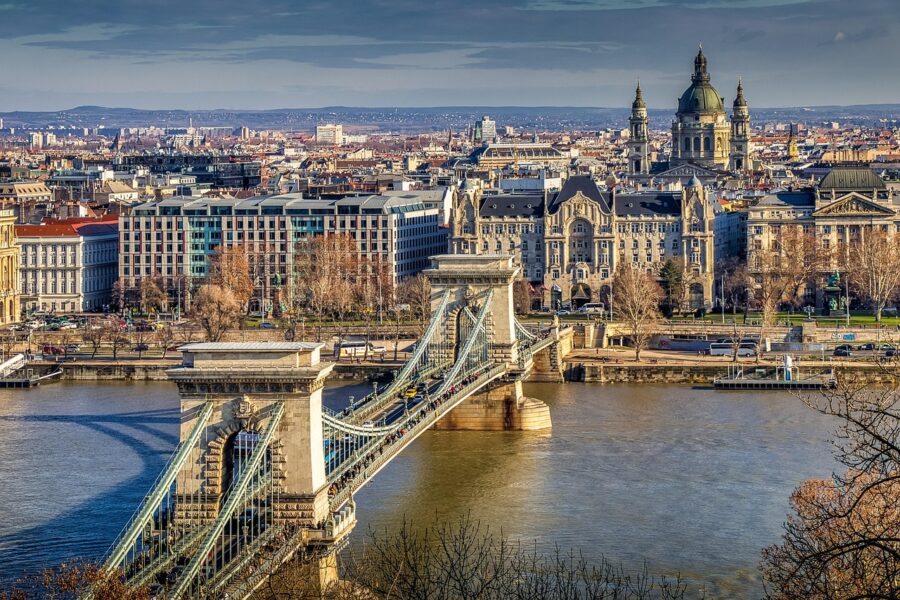
The mighty Danube River cuts through Budapest’s heart, creating two distinct sides with their own personalities. Buda sits on the western bank, with rolling hills and a more peaceful vibe. Pest spreads across the flat eastern side with its busy city streets.
The Hungarian Parliament Building stands as the city’s most famous sight. This massive neo-Gothic masterpiece sits right on the Danube’s edge in Pest, with 691 rooms and a stunning dome that reaches 96 meters high.
The Chain Bridge connects the two sides, letting you walk between Buda and Pest while taking in amazing river views. On the Buda side, Castle Hill rises above the city. The historic Buda Castle sits at the top, giving you great views of both sides of the city.
Split: Old Town and Diocletian’s Palace
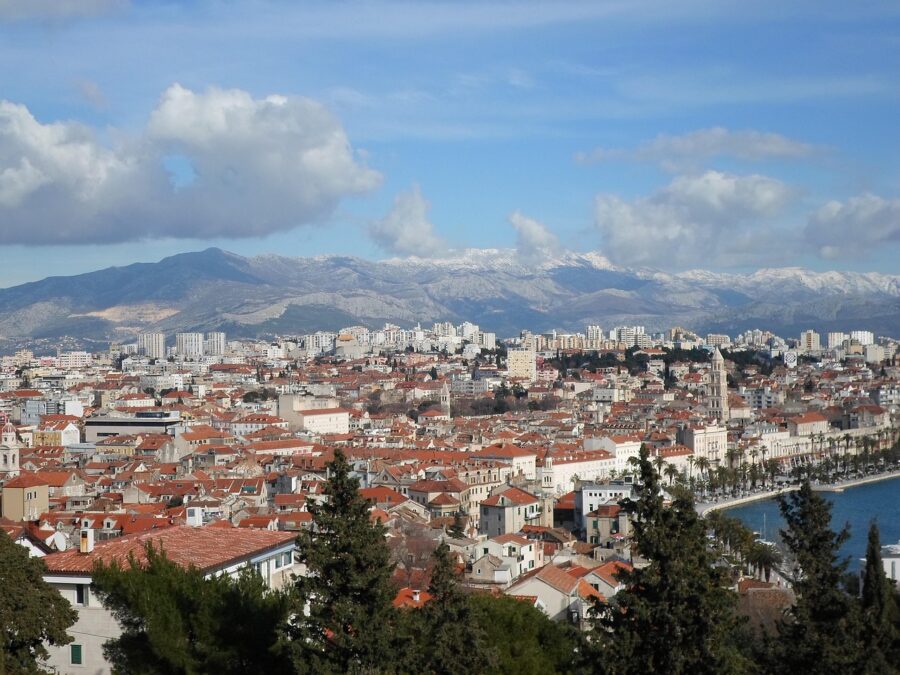
Split’s historic center wraps around its main treasure – Diocletian’s Palace. Built in the 4th century as a Roman emperor’s home, the palace walls now form the heart of Split’s Old Town.
The palace complex takes up about half of Split’s Old Town. Its white stone walls hide a maze of tiny streets filled with shops, homes, and restaurants. The main square, called the Peristyle, shows off beautiful Roman columns and architecture.
The Old Town spreads from the palace down to Split’s pretty harbor. The Riva promenade runs along the water, lined with palm trees and cafes. Behind the Old Town, Marjan Hill gives you amazing views of the palace, harbor, and nearby islands.
Cultural Insights and Experiences
Both cities shine with distinct cultural identities shaped by centuries of history and modern influences. The artistic spirit of Budapest mixes with Split’s coastal heritage to create unique experiences for visitors.
Cultural Festivals in Budapest
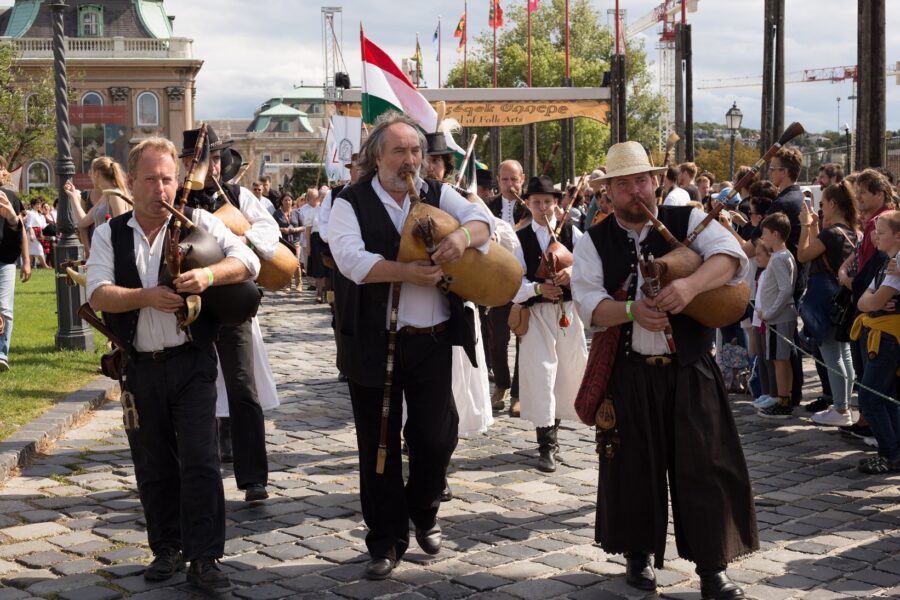
Budapest’s festival scene bursts with energy year-round. The Budapest Spring Festival brings classical music and dance performances to historic venues across the city. Street performers fill the VIII district, which has changed from a rough area into a thriving arts hub.
The Jewish Summer Festival celebrates the city’s rich Jewish heritage with concerts and food events. Every August, the Festival of Folk Arts at Buda Castle shows off traditional Hungarian crafts and music.
Local markets like the Great Market Hall let visitors taste authentic Hungarian dishes. The city’s famous ruin bars – creative spaces in abandoned buildings – showcase modern Hungarian culture through art, music, and design.
Split’s Game of Thrones Heritage
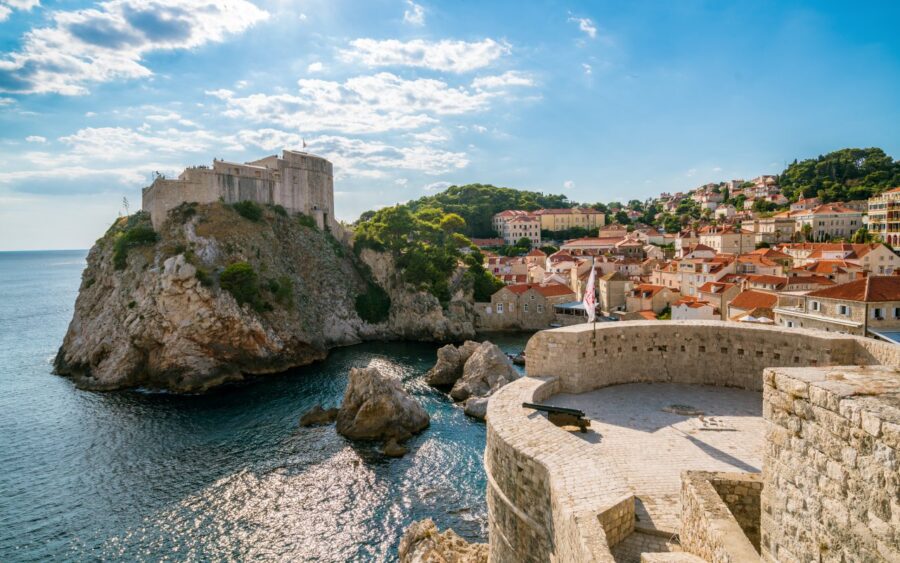
Split’s ancient streets gained new fame as a key filming location for fantasy tours. Diocletian’s Palace served as a backdrop for several important scenes in the series.
The city embraces this connection while maintaining its authentic charm. Local guides share stories about both the real history and filming locations. Visitors can explore the palace basement where Daenerys kept her dragons.
Beyond TV fame, Split preserves its traditional Dalmatian culture. The Klapa singing groups perform a cappella in the old town’s squares. Local fishermen still sell their catch at the morning market, continuing centuries-old traditions.
Economic Factors: Living and Travel Costs
The cost differences between Split and Budapest are quite striking. Budapest offers more affordable living costs, while Split tends to have higher prices due to its coastal location and tourist appeal.
Cost of Living in Budapest
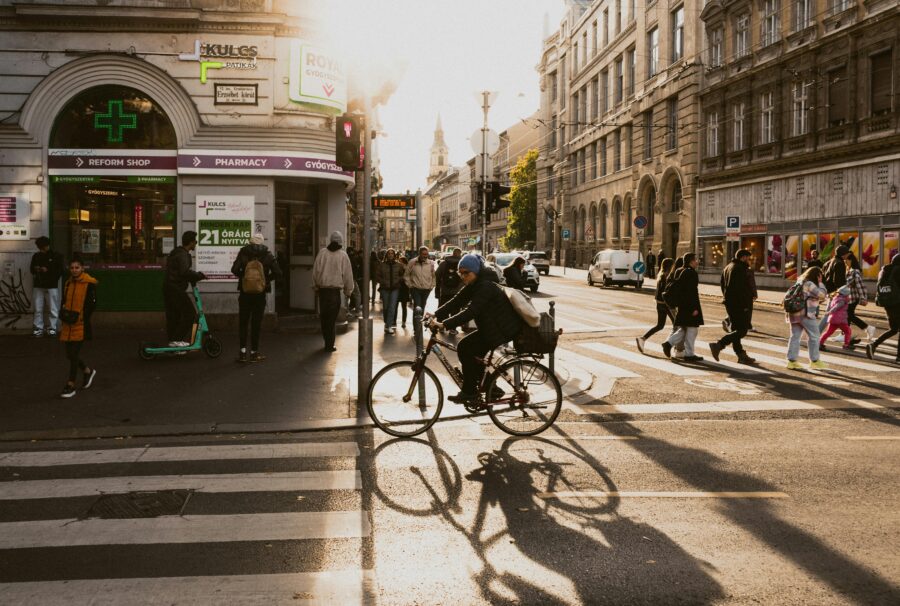
Budapest stands out as one of Europe’s most budget-friendly capitals. A family of four needs about €2,450 ($2,665) monthly for basic expenses, not counting rent.
Food and groceries are much cheaper than in Split. Local markets and supermarkets offer fresh produce at great prices.
Rent prices make Budapest extra appealing. A one-bedroom apartment in the city center costs around €500-700 monthly. Outside the center, prices drop to €350-500.
Public transport is a steal at €30 for a monthly pass. Taxis and ride-shares are cheap too.
Vacation Expenses in Split
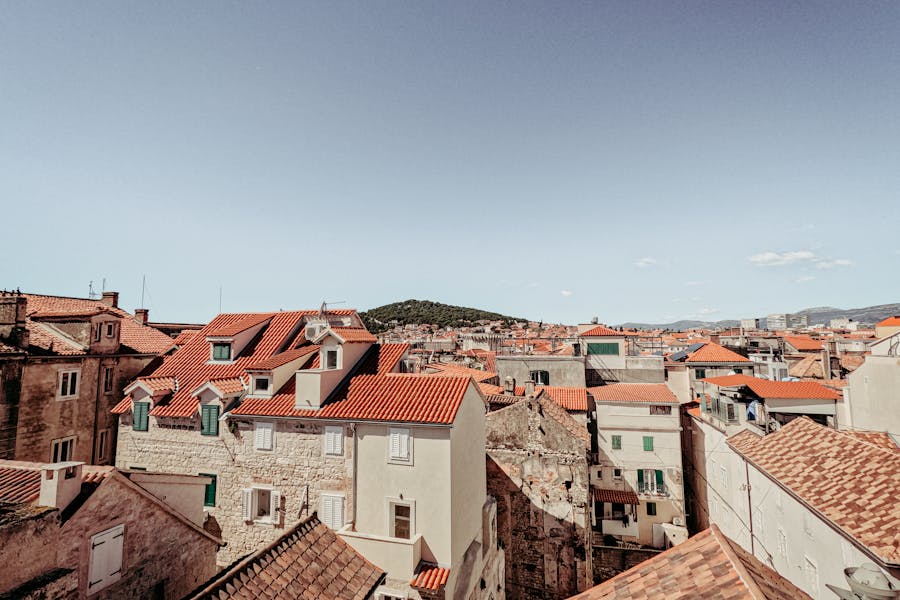
Split’s prices reflect its status as a prime tourist spot. Daily costs for visitors run higher than Budapest, with accommodation being the biggest expense.
Summer hotel rates in Split can reach €150-200 per night for mid-range options. Budget travelers can find hostels starting at €25-35 per night.
Restaurant meals cost more here too. A nice dinner for two might cost €50-70, while the same meal in Budapest would be €30-40.
Beach clubs and tourist activities add up quickly. Many attractions charge €15-25 per person, not counting boat tours or island trips.
Transportation within Split costs more than Budapest. A daily bus ticket runs about €4, while taxis charge higher base rates.
Culinary Journeys
Both cities offer incredible food experiences that reflect their rich cultural heritage, from Michelin-starred restaurants to local markets and traditional eateries.
Hungarian Gastronomy
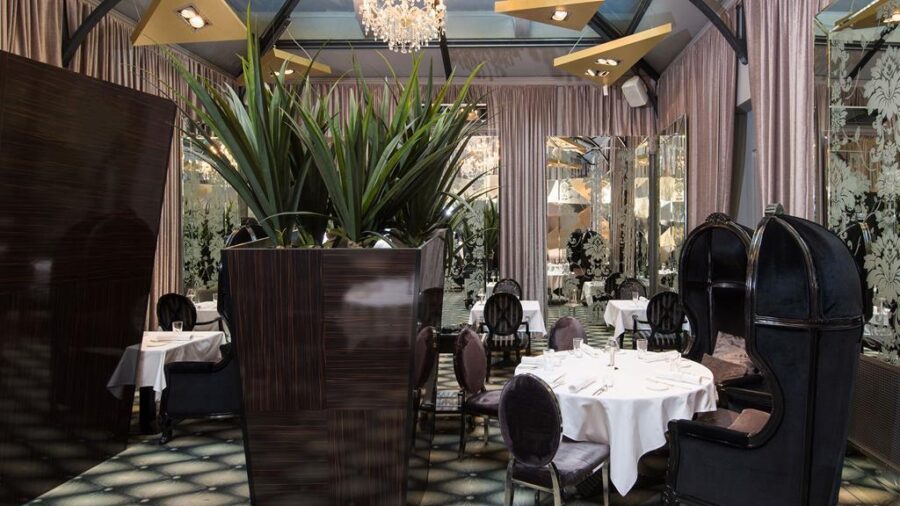
Budapest’s food scene mixes old-world charm with modern innovation. The city’s crown jewel, Onyx Restaurant, holds two Michelin stars and serves creative takes on Hungarian classics. The famous Great Market Hall lets visitors taste local specialties like gulyas (goulash) and langos – a deep-fried flatbread topped with sour cream and cheese.
Traditional Hungarian restaurants called “etterems” dot the city streets. These spots serve hearty dishes like chicken paprikash and stuffed cabbage rolls at reasonable prices.
Street food in Budapest deserves special mention. Food stalls sell kürtőskalács (chimney cakes) and kolbász (Hungarian sausages) that make perfect quick bites between sightseeing stops.
Croatian Cuisine in Split
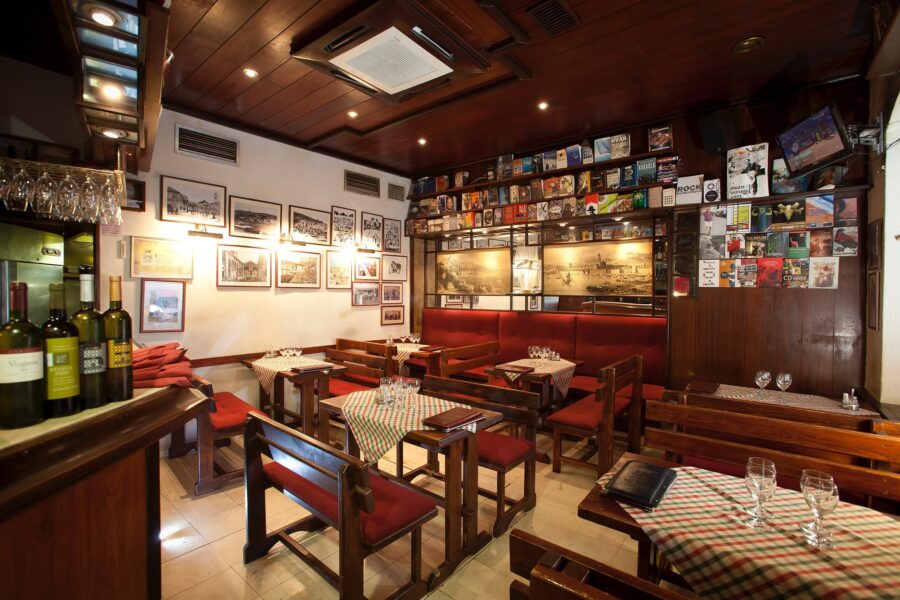
Split’s waterfront location shapes its food culture. Fresh seafood appears on most menus, from grilled fish to black risotto made with cuttlefish ink. Local konobas (traditional restaurants) like Konoba Hvaranin serve authentic Dalmatian dishes.
The city’s markets burst with Mediterranean ingredients. Visitors find local olive oils, fresh figs, and prsut (dry-cured ham) at reasonable prices.
Popular Croatian dishes include peka (meat and vegetables cooked under a bell-shaped lid) and pasticada (marinated beef stew). These meals pair perfectly with local Croatian wines from nearby regions.
Street food options include fresh burek (cheese or meat pastries) and fritule (sweet fried dough) from bakeries throughout the old town.
Nightlife and Entertainment
Both cities offer exciting after-dark scenes that cater to different party styles. Budapest shines with historic ruin bars and thermal bath parties, while Split brings beachfront clubs and bustling coastal bars.
Budapest’s Vibrant Night Scene
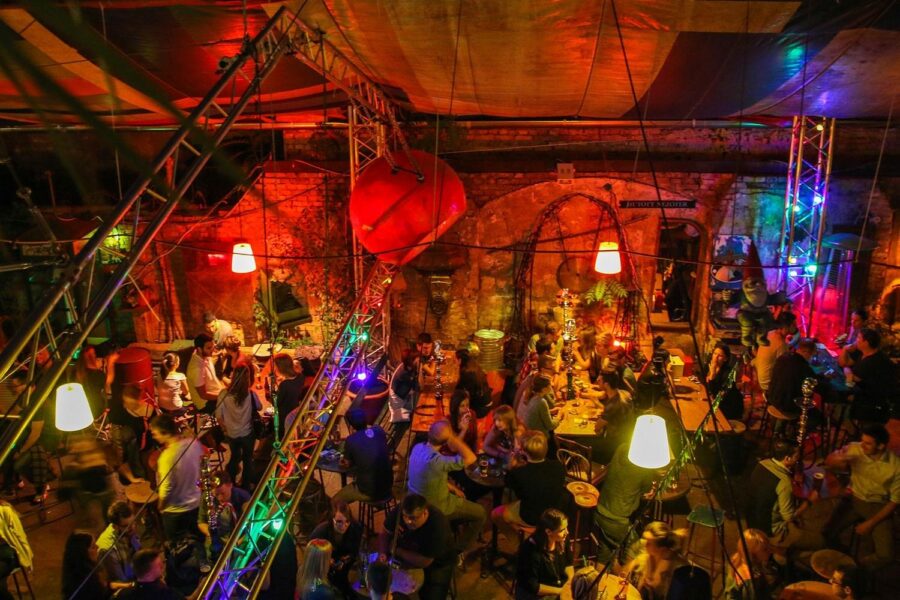
The famous ruin bars in Budapest’s Jewish Quarter transform abandoned buildings into quirky party spots. These one-of-a-kind venues mix vintage furniture with modern music and strong drinks.
Szimpla Kert leads the pack as the original ruin pub, featuring multiple rooms with different music styles. Each room tells its own story through odd decorations and unique atmospheres.
The city comes alive with thermal bath parties at places like Széchenyi. DJs play while people dance in warm waters under the stars – an experience you won’t find anywhere else.
Split’s Party Hotspots
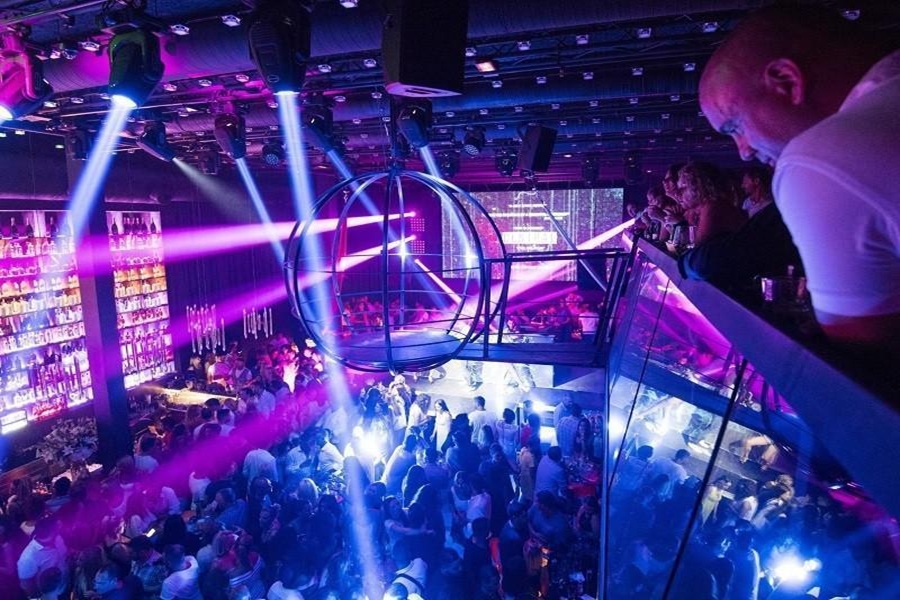
Split’s nightlife centers around the Bacvice beach area and Old Town streets. The warm Mediterranean climate means outdoor parties happen almost year-round.
Popular beach clubs like Central’s Club pump out house music until sunrise. The mix of tourists and locals creates an international party vibe that’s hard to beat.
The bars along Split’s waterfront promenade offer everything from craft cocktails to local wines. Many venues feature live music, with both Croatian and international DJs taking the stage.
Small wine bars tucked into ancient stone buildings provide a more laid-back option. These spots let you taste Croatian wines while chatting with friendly locals.
Outdoor Activities and Nature Exploration
Both cities offer unique outdoor experiences, with Budapest’s hiking trails and thermal baths contrasting nicely with Split’s beautiful beaches and crystal-clear waters.
Hiking around Budapest
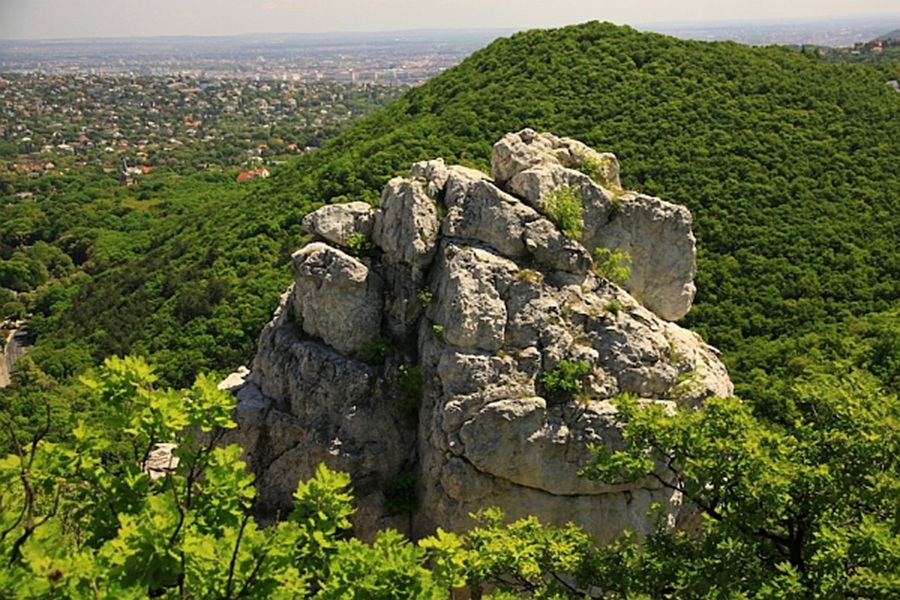
The Buda Hills provide amazing trails for nature lovers. These paths wind through lush forests and offer great views of the city below. The Elizabeth Lookout Tower, sitting at the highest point, gives a perfect panorama of Budapest.
Margaret Island is a green oasis right in the middle of the Danube. Its 5.3 km running track circles the island, passing rose gardens and medieval ruins. The island is perfect for picnics, jogging, or just taking a peaceful walk.
The hills around Normafa are popular with locals for weekend hikes. In winter, these slopes transform into sledding spots when snow falls. The area has well-marked trails suitable for all skill levels.
Beach Leisure in Split
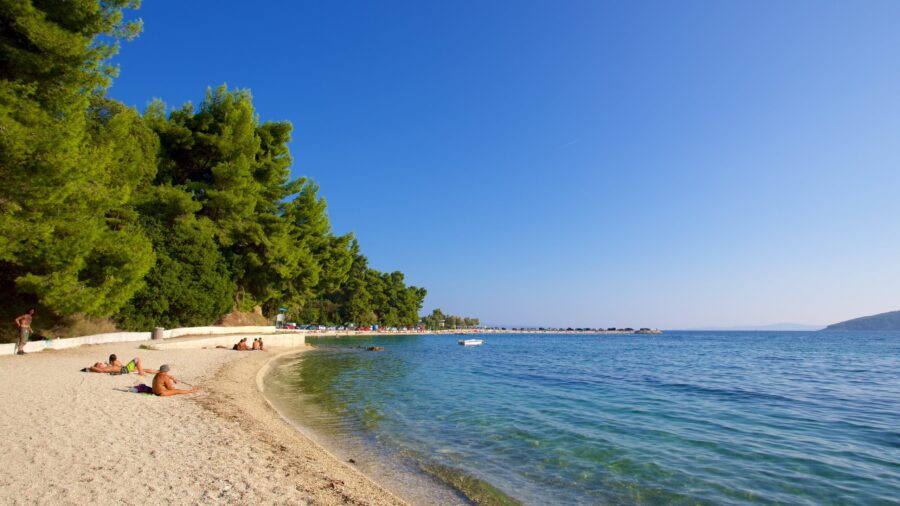
Split’s beaches mix perfectly with its historic charm. Bačvice Beach, just minutes from the old town, offers shallow waters ideal for swimming. The beach comes alive with locals playing picigin, a unique ball game native to Split.
The pebble beaches along Split’s coast have crystal-clear waters perfect for snorkeling. Kasjuni Beach and Bene Beach offer more peaceful spots away from crowds, with pine trees providing natural shade.
Water sports rentals are easy to find. Visitors can try kayaking, stand-up paddleboarding, or jet skiing. The calm morning waters are best for these activities before afternoon winds pick up.
Accommodation Options and Recommendations
Both cities offer unique lodging choices that cater to different budgets and styles. Travelers can pick from historic buildings turned hotels to modern apartments near key attractions.
Staying in Budapest: From Budget to Luxury
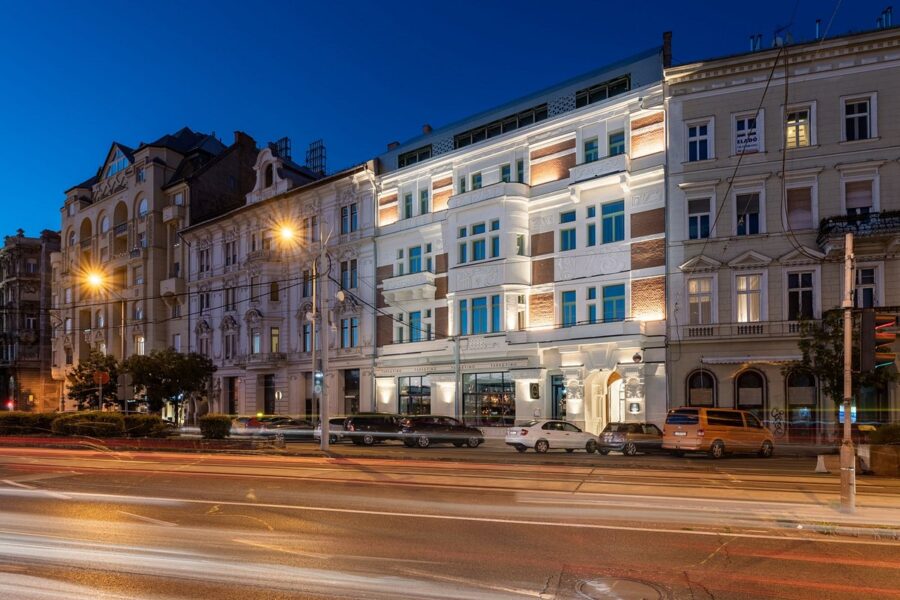
Budapest’s accommodation scene spans every price range. The city center features elegant boutique hotels in restored 19th-century buildings. Many luxury spots sit along the Danube with stunning river views.
The Jewish Quarter brims with stylish vacation rentals on Booking.com. These apartments give guests a local feel while staying close to ruin bars and restaurants.
Budget travelers will love the hostels near Oktogon and Andrassy Avenue. These spots often include free walking tours and pub crawls.
Some top picks in District V offer rooftop pools and thermal spas. This central area puts guests steps from the Parliament building and Chain Bridge.
Split’s Accommodations: Variety and Charm
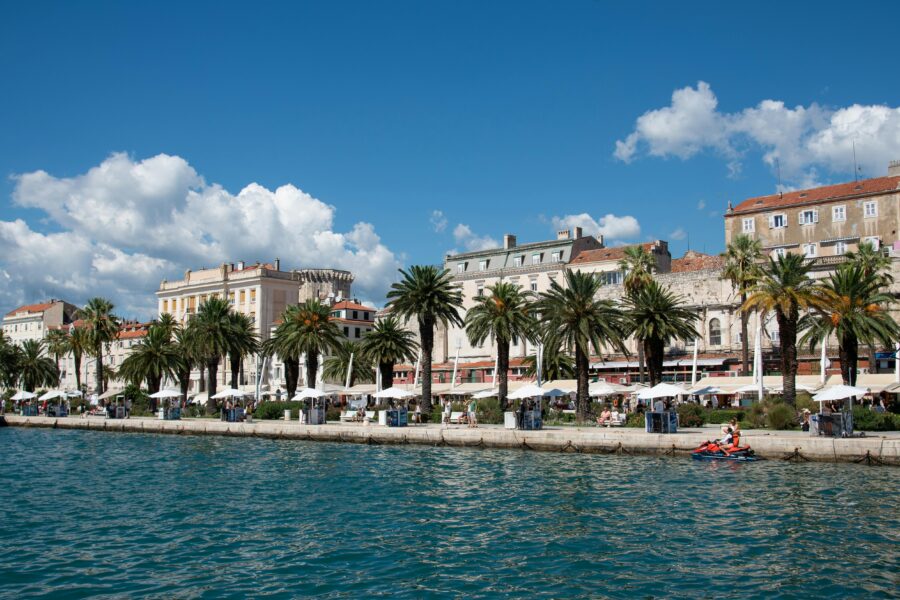
Split shines with its beachfront properties and apartments inside Diocletian’s Palace walls. The old town features stone houses turned into cozy guest rooms with original architectural details.
The Riva waterfront presents modern hotels with sea-view balconies. Many include breakfast on outdoor terraces facing the Adriatic.
Private rooms and apartments near Bacvice Beach give easy access to swimming spots. These rentals often cost less than hotels while offering full kitchens.
The Varos neighborhood provides quiet stays in traditional Dalmatian houses. Guests enjoy local markets and family restaurants just outside their door.
Transportation and Mobility
Both cities offer unique transit options that shape how visitors experience these destinations. Budapest relies heavily on its extensive public transport network, while Split combines modern buses with walkable historic areas.
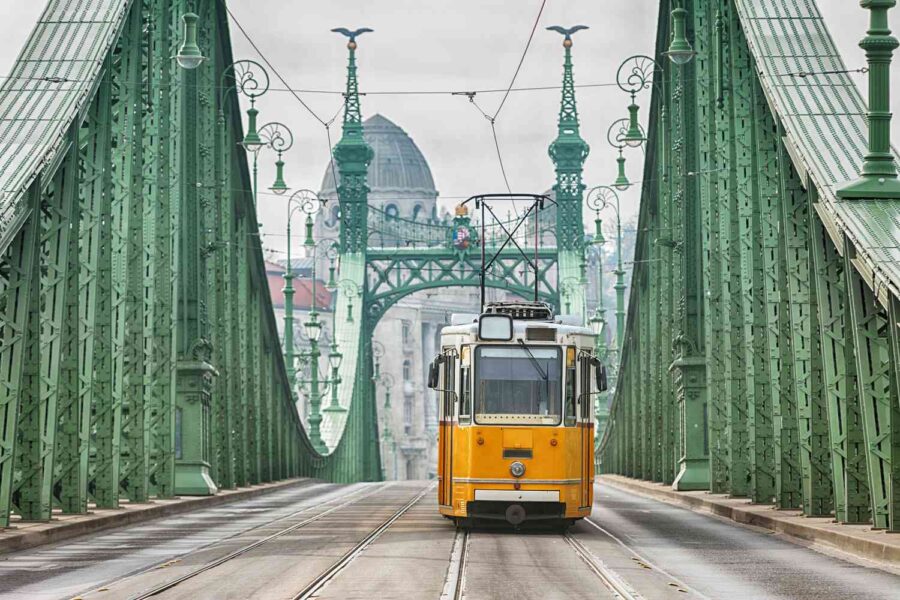
Budapest’s public transit system is one of Eastern Europe’s most efficient networks. The city runs a mix of metros, trams, and buses that connect all major areas.
The metro system has four lines marked by different colors, making it easy to navigate. Line 1 is extra special – it’s the oldest underground railway in continental Europe.
Trams provide a scenic way to explore the city. The number 2 tram offers amazing views as it runs along the Danube River near Parliament.
Visitors can buy tickets at metro stations or from purple ticket machines. A single ticket costs about 350 HUF, but multi-day passes save money for longer stays.
Getting Around Split: Options and Tips
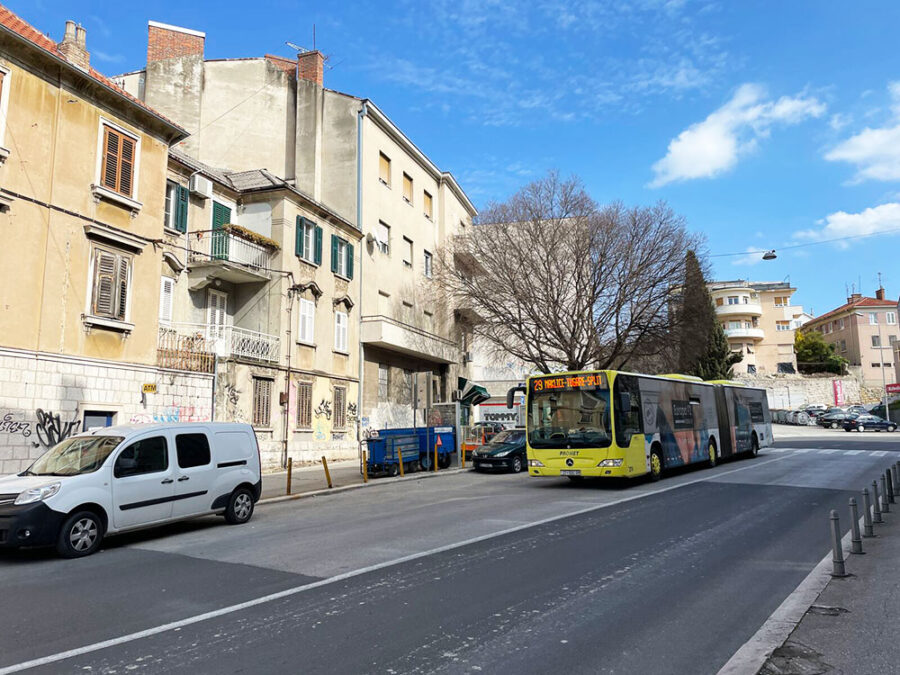
Split’s compact size makes walking the best choice in the historic center. The marble streets of Diocletian’s Palace and surrounding areas are pedestrian-friendly zones.
Local buses connect the city center to beaches, suburbs, and nearby towns. Bus tickets can be bought from drivers or at newspaper kiosks.
Taxis are widely available near major hotels and the ferry port. Many drivers speak English, but it’s smart to agree on the fare before starting your ride.
Renting bikes or scooters gives you freedom to explore the Marjan Hill area and coastal paths at your own pace.
Digital Nomad Hotspots: Work and Connectivity
Both cities offer remote workers excellent spots to plug in and get work done, with fast internet speeds and plenty of places to set up a laptop. The two destinations bring different strengths to digital nomads seeking their next base.
Budapest: A Hub for Digital Nomads

Budapest shines with its extensive network of modern coworking spaces spread across both Buda and Pest. The city delivers reliable internet speeds averaging 57 Mbps download and 14 Mbps upload – more than enough for video calls and file transfers.
The wifi situation is rock-solid. Most cafes offer free connections, and mobile data plans are cheap at around $15-20 per month. For backup internet, portable wifi devices rent for just $7 daily.
The city’s coworking spaces mix historic architecture with modern amenities. Many spots cluster around District VII, where digital nomads can find desk space starting at $150 monthly. Popular spaces include:
- Impact Hub Budapest
- Kaptar Coworking
- Loffice Budapest
Split’s Attractions for Remote Workers

Split draws remote workers with its seaside setting and growing tech scene. The city boasts solid internet infrastructure with fiber optic connections in most areas.
Most cafes and restaurants provide free wifi, though speeds can vary during peak tourist season. Mobile data plans start around $20 monthly through Croatian carriers.
The coworking scene centers on a few key spots near the historic core:
- WIP Coworking
- Smartspace Split
- The Works Hub
Many digital nomads mix work with beach time, setting up laptops at waterfront cafes. The mild climate lets remote workers enjoy outdoor workspace options most of the year.
Safety and Welfare for Travelers
Both cities prioritize tourist safety, but they face different challenges due to their size and location. Local police maintain a strong presence in tourist areas, and violent crime rates remain low in both destinations.
Staying Safe in Budapest
Budapest ranks as one of the safest cities in Eastern Europe. The police force patrols tourist zones frequently, especially around Castle Hill and the Jewish Quarter.
Pickpocketing can happen in crowded areas like Váci Street and near major metro stations. Keep valuables secure and stay alert in busy spots.
The emergency number in Budapest is 112, and many officers speak English. Medical care meets high European standards, with several tourist-friendly clinics in the city center.
Taxi scams sometimes target tourists. Use licensed services like Főtaxi or Bolt, or stick to public transport, which runs safely late into the night.
Safety Concerns and Tips for Split
Split’s compact size makes it easy to navigate safely. The historic center stays well-lit and patrolled, especially during peak tourist season.
Beach areas require extra attention. Don’t leave belongings unattended on Bačvice Beach or other popular spots. Swimming is safest at monitored beaches with lifeguards.
The main risks include sunburn and heat exhaustion in summer months. Carry water and seek shade during peak hours between 11 AM and 3 PM.
Local emergency services respond quickly, and the tourist police station near Diocletian’s Palace offers help in multiple languages. The Croatian emergency number is also 112.
Exploring Local Arts and Museums
Both cities offer remarkable cultural experiences through their diverse museums and art institutions. Each destination showcases its unique heritage and artistic achievements in distinct ways.
Budapest’s Rich Art Scene
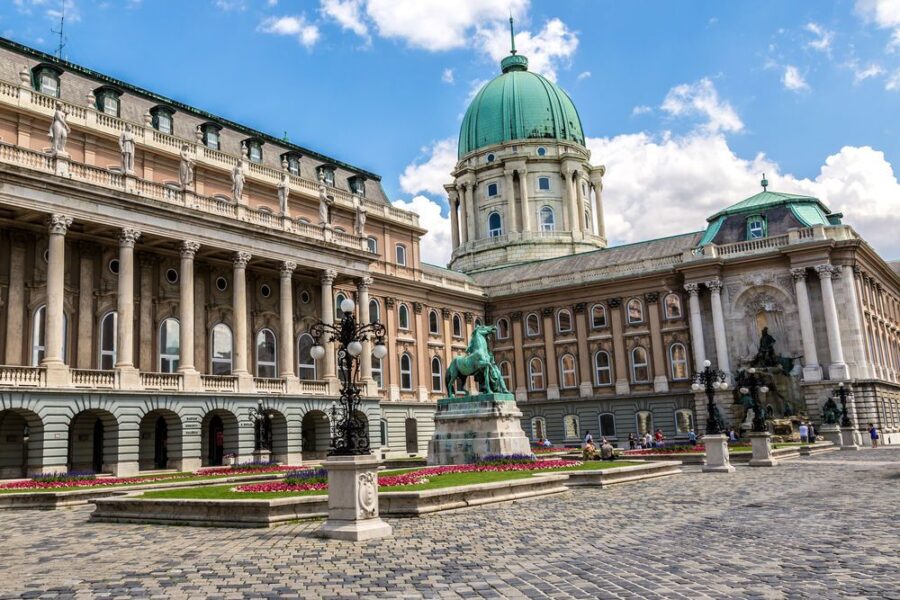
The Hungarian National Gallery stands as the crown jewel of Budapest’s art scene, housed in the magnificent Buda Castle. Its halls display an impressive collection of Hungarian art from medieval times to the present.
The Museum of Fine Arts sits in Heroes’ Square, featuring masterpieces from European artists like El Greco and Rembrandt. The building’s neo-classical architecture adds to its grandeur.
Contemporary art thrives at the Ludwig Museum, where visitors can explore modern Hungarian and international works. The museum’s location in the Palace of Arts makes it easy to combine with other cultural activities.
Museums and Galleries in Split
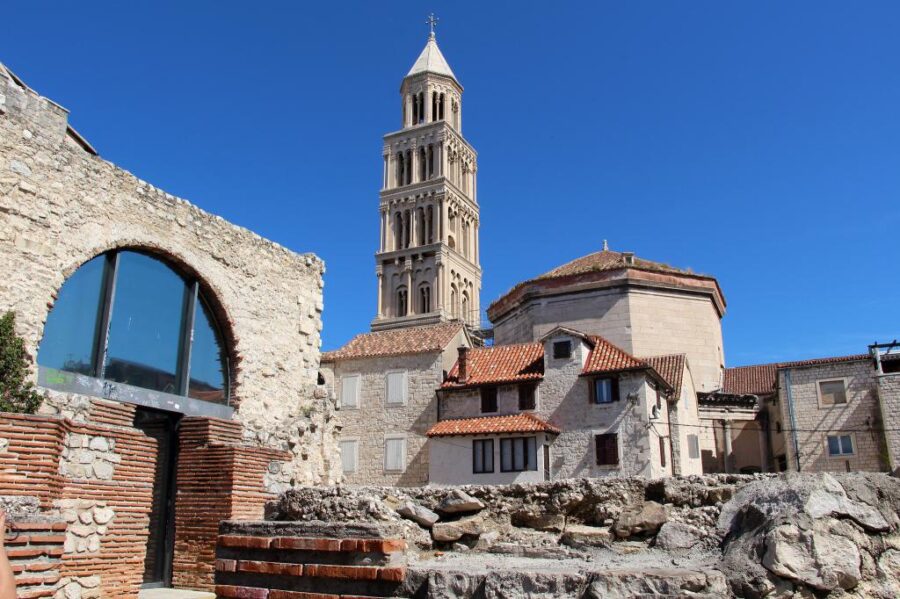
The Gothic-Renaissance Papalić Palace hosts the Split City Museum, where visitors can trace the city’s evolution through carefully curated exhibits. The museum brings Split’s rich past to life through artifacts and local stories.
The Archaeological Museum showcases fascinating finds from Roman Salona. Visitors can see ancient sculptures, jewelry, coins, and ceramics that paint a picture of life in ancient times.
The Treasury of Split Cathedral contains precious religious artifacts and art pieces. Its location within Diocletian’s Palace makes it a must-visit spot for art and history fans.
The Meštrović Gallery celebrates Croatia’s famous sculptor Ivan Meštrović. The beautiful seaside setting complements the stunning collection of sculptures and drawings.
Frequently Asked Questions
Split and Budapest stand apart through their contrasting coastal Mediterranean charm versus grand Central European architecture. Each city delivers unique value in terms of costs, culture, nightlife, and food that shape different travel experiences.
What are the unique travel experiences that Split offers compared to Budapest?
Split welcomes visitors with its seaside location and Roman history. The Adriatic beaches and crystal waters create perfect spots for swimming and sailing.
Budapest sits along the Danube River with its mix of grand buildings and thermal spas. The city’s hills offer scenic viewpoints of both Buda and Pest sides.
How does the cost of living for tourists compare between Split and Budapest?
Budapest tends to be more budget-friendly than Split. Meals in Budapest cost about 21% less than in Split.
A basic lunch in Budapest’s business district costs around €10, while Split charges about €20 for similar meals.
Tourists need about €3,927 in Split to maintain the same lifestyle that €3,185 would provide in Budapest.
Can you highlight the cultural differences visitors might encounter while vacationing in Split versus Budapest?
Split embraces a laid-back Mediterranean lifestyle with strong Italian influences. People spend evenings strolling the Riva promenade and gathering in cafes.
Budapest reflects its mix of Austrian and Hungarian heritage. The cafe culture includes historic coffee houses and evening wine bars.
In terms of historical landmarks and heritage sites, how do Split and Budapest differ?
Split centers on Diocletian’s Palace, a living Roman complex that forms the heart of the old town. Ancient stone buildings house shops and homes within the palace walls.
Budapest features Gothic and Neo-Classical architecture across both sides of the Danube. The Parliament Building and Buda Castle showcase the city’s imperial past.
How do the culinary scenes in Split and Budapest contrast, especially for food enthusiasts?
Split’s food scene focuses on fresh seafood, grilled meats, and Dalmatian wines. Local specialties include black risotto and pašticada with gnocchi.
Budapest mixes Hungarian classics with modern dining. Traditional goulash and langos share space with trendy fusion restaurants and food markets.
What should travelers consider when deciding between the nightlife in Split and Budapest?
Split offers beachfront bars and clubs that peak during summer months. The nightlife stays active until sunrise in peak season.
Budapest’s ruin bars transform old buildings into unique party spaces. The city provides more year-round nightlife options with varied music scenes.
The 7th district buzzes with energy every night of the week. Many venues stay open until 4 AM or later.

